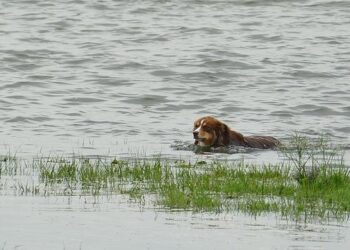In an unexpected twist to global supply trends, a sudden surge in demand for canned mackerel and emergency radios has sparked shortages across several markets. Industry experts and retailers alike are scrambling to understand the cause behind this phenomenon, which traces back to the rapid proliferation of drone technology. As drones become increasingly prevalent for both commercial and recreational use, consumers are stockpiling essential supplies believed to be critical in a world where unmanned aerial devices redefine security and preparedness. This article explores the underlying reasons fueling this unique run on goods and what it reveals about evolving consumer behavior in the age of drones.
Rising Demand for Canned Mackerel and Emergency Radios Sparks Supply Concerns
Recent market shifts have led to an unexpected surge in consumer purchases of canned mackerel and emergency radios, stirring alarms among suppliers. This frenzy is directly linked to increasing concerns over drone technology being deployed in unpredictable ways. As drones become more common in both civilian and defense contexts, many households and businesses are stockpiling essential supplies to prepare for potential disruptions in communication and food accessibility. Retailers report shelves emptying at unprecedented rates, prompting logistical challenges that threaten to widen the gap between demand and availability.
Industry experts highlight several key factors driving this phenomenon:
- Fear of power outages: Emergency radios provide a vital lifeline when traditional communication networks fail.
- Non-perishable food focus: Canned mackerel offers a reliable protein source with a long shelf life, ideal for crisis preparedness.
- Supply chain strains: Increased procurement and transportation delays are exacerbating shortages, with no immediate relief in sight.
Below is a snapshot of supply-demand changes over the past quarter:
| Product | Demand Increase | Supply Shortfall |
|---|---|---|
| Canned Mackerel | +45% | -30% |
| Emergency Radios | +60% | -40% |
How Drone Surveillance is Changing Emergency Preparedness Strategies
Drones have revolutionized how first responders and government agencies approach crisis management. Equipped with high-definition cameras, thermal imaging, and real-time data transmission capabilities, these aerial devices provide an unparalleled vantage point during natural disasters or large-scale emergencies. Their ability to rapidly assess damage and identify vulnerable populations enables emergency teams to allocate resources with precision and speed previously unattainable. As a result, communities can receive critical aid faster, reducing casualties and long-term impact.
Key benefits of drone integration in emergency preparedness include:
- Real-time surveillance of affected areas without putting personnel at risk
- Enhanced coordination between multiple agencies through shared live feeds
- Improved accuracy in mapping flood zones, wildfire perimeters, and structural damages
| Drone Capability | Emergency Use Case | Impact |
|---|---|---|
| Thermal Imaging | Locating heat signatures during wildfires | Speeds up rescue operations |
| Live Video Streaming | Monitoring flood zones in real-time | Improves response coordination |
| GPS Mapping | Creating accurate disaster maps | Facilitates targeted relief efforts |
Experts Advise Stockpiling Essential Supplies as Drone Activity Increases
Amid a noticeable uptick in drone flights across urban and rural areas, experts are urging residents to stockpile key supplies to prepare for unexpected disruptions. Authorities warn that increased drone activity-whether for surveillance, delivery, or other undisclosed purposes-could lead to temporary interruptions in essential services, communication networks, and supply chains. Essential items such as non-perishable food, emergency radios, and backup power sources have surged in sales, signaling a growing public awareness of the need for self-reliance during potential emergencies.
Specialists emphasize the importance of assembling a well-rounded kit tailored to sustain a household for at least 72 hours. Recommended supplies include:
- Canned goods – items with long shelf lives, like mackerel, beans, and vegetables
- Battery-powered or hand-crank radios to stay informed when digital communication is compromised
- Portable power banks and solar chargers to maintain connectivity
- First aid kits for immediate medical needs
- Water purification tablets and bottled water
| Supply | Recommended Quantity | Reason |
|---|---|---|
| Canned Mackerel | 10-15 cans per person | High protein, long shelf life |
| Emergency Radio | 1 per household | Access to real-time updates |
| Power Banks | 2 medium-size | Keep devices charged during outages |
To Wrap It Up
As drone technology continues to advance and reshape both civilian and military landscapes, its ripple effects are being felt far beyond the skies. The unexpected surge in demand for canned mackerel and emergency radios underscores the growing public concern over preparedness in an era marked by rapid technological change and emerging security challenges. Whether driven by fears of supply chain disruptions, communication breakdowns, or broader geopolitical tensions, these consumer behaviors highlight a new dimension of how modern innovations influence everyday life and market dynamics. As authorities and industries adapt to this evolving landscape, the intersection of drones and domestic readiness will remain a critical area to watch in the months ahead.















